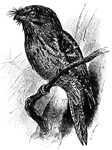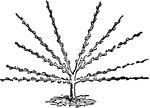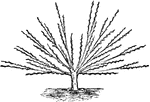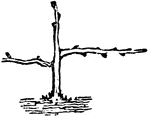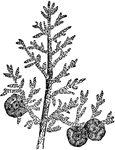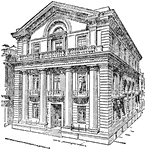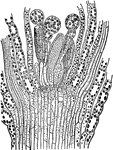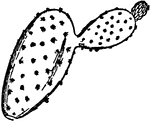
Non-Striated Muscle
"Non-striped spindle-shaped cells which branch and join with one another." — Richardson, 1906
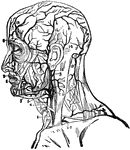
Facial Arteries
"1, primitive carotid artery dividing itself into carotid external and carotid internal; 3, occipital…

Thoracic Aorta
"The three branches from left to right are the unnamed ones. The primitive left carotid and the subclavian…

Ivy
The common ivy is a wellknown native of Britian and most parts of Europe and some parts of America.…

Fiber
"Branching fiber, from spiral vessels of Gourd (Cucurbita Pepo)." — Encyclopedia Britanica, 1893

Geometrina
"The Geometrina in the larval condition have only four prolegs, the usual number being ten, and in moving…

Geometrina
"The Geometrina in the larval condition have only four prolegs, the usual number being ten, and in moving…
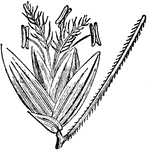
Panicacae
"Panicacae. Spikelet of Setaria, with an abortive branch beneath it." — Encyclopedia Britannica,…
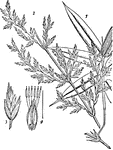
Indian Bamboo
"Bambusa arundinacea, in Indian bamboo. 1. Leafy shoot. 2, Branch of inflorescence. 3, Spikelet.…

Connective Tissue
"Presently in the production of ordinay connective tissue, fibers of two kinds make their appearance…
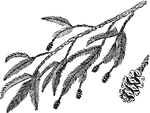
Redwood Branch
A Californian timber tree. Grows 200 to 300 feet high and have a thick cinnamon colored bark. The inside…
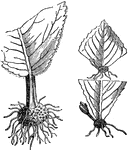
Leaf Cuttings
"Many plans may be propagated by planting their leaves or portions of their leaves as cuttings, as,…
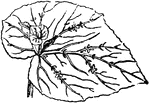
Leaf Cuttings
"Many plans may be propagated by planting their leaves or portions of their leaves as cuttings, as,…

Dwarf-Tree Pruning
"This image gives a good idea of how these drawf trees are to be manipulated, a showing the first year's…

Pyramid Pruning
"a shows a young tree with its second year's growth, the upright shoot of the maiden tree having been…
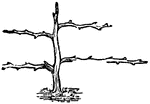
Horizontal Shaped Pruning
"Pruning for Horizontally-Trained Tree, Third Year." — Encyclopedia Britannica, 1893
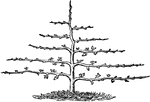
Horizontal Shaped Pruning
"Pruning for Horizontally-Trained Tree, Fifth Year." — Encyclopedia Britannica, 1893
Pruning
"The nature of the cut itself in pruning is of more consequence, especially in the case of fruit trees,…

Pruning
"The nature of the cut itself in pruning is of more consequence, especially in the case of fruit trees,…
Pruning
"The nature of the cut itself in pruning is of more consequence, especially in the case of fruit trees,…
Pruning
"The nature of the cut itself in pruning is of more consequence, especially in the case of fruit trees,…
Pruning
"The nature of the cut itself in pruning is of more consequence, especially in the case of fruit trees,…
Pruning
"The nature of the cut itself in pruning is of more consequence, especially in the case of fruit trees,…

Summer Pruning
"Summer Pruning should be performed while the shoots are yet young and succulent, so that they may be…
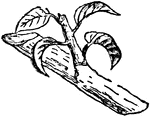
Summer Pruning
"Summer Pruning should be performed while the shoots are yet young and succulent, so that they may be…

Pelargoniums
"Some plants, like pelargoniums, can only be kept handsomely formed and well furnished by cutting them…

Montreuil Fan
"The Montreuil form of training. The principal feature is the suppression of the direct channel of the…

Allaria Officinalis
"Allaria officinalis. a, upper part of stem, with leaves and flowers; b, extremity of a branch, in fruit."…
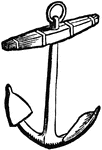
Anchor
"The vertical or supporting beam of the A. is the shank, B; at the upper end of it is the ring, r; and…

Araucaria Imbricata
"Araucaria imbricata: End of a branch, much reduced, showing the mode of ramification, and the manner…
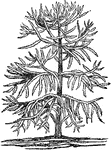
Araucaria Imbricata
"Araucaria imbricata: Sketched in the Botanic Gardens, Edinburgh." — Chambers' Encyclopedia, 1875
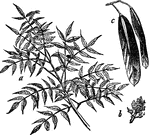
Common Ash
"Common Ash. a, a branch with leaves; b, flowers; c, fruit (on a considerably larger scale than the…
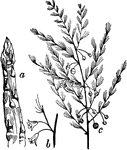
Asparagus
"Asparagus. a, a young shoot; b, flowers; c, the upper end of a stem, showing branches, leaves, and…
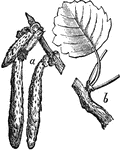
Aspen
"A tree which grows plentifully in Europe and in Siberia. It is a native of Britain, and is frequent…
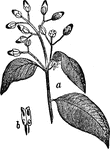
Cinnamon
"Cinnamon: a, end of branch, with leaves and flowers; b, four-celled anther." — Chambers' Encyclopedia,…
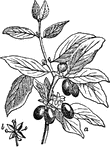
Cornel
"Cornel: a, a branch with leaves and fruit; b, a single flower." — Chambers' Encyclopedia, 1875
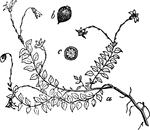
Cranberry
"Cranberry (Vaccinium palustris): a, part of stem and branches, with roots, leaves, and flowers; b,…
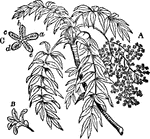
Cusso
"Cusso: A, a branch, with leaves and flowers; B, a flower seen laterally; C, a female flower; a, b,…

Dogbane
"Dogbane. a, end of branch, with leaves and flowers; b, a flower cut open; c, fruit." — Chambers'…

London City
"London City and Midland Bank, Ludgate Hill Branch." — The Encyclopedia Britannica, 1910
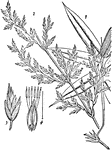
Bamboo
"Bambusa arundinacea, an Indian bamboo. 1, Leafy shoot. 2, Branch of inflorescence. 3, Spikelet. 4,…

Facial Nerve
"(1) The facial nerve at its emergence from stylo-mastoid foramen; (2) temporal branches communicating…

Air-Pump
"This was invented in 1865 by H. Sprengel. The instrument, in its original (simplest) form, consists…

Deadly Nightshade
A flowering branch. 1, flower after removal of the corolla; 2, corolla, with stamens cut open and flattened;…

